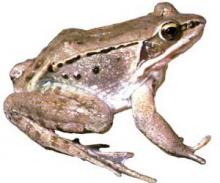Mountain birds are declining in Europe
- Read more about Mountain birds are declining in Europe
- Log in to post comments
Population data for European mountain birds have been for the first time combined in a recent study, with worrying results: the abundances of mountain-specialist birds has declined by as much as 10% in the 2000s. The recently released study examined the population trends of 44 bird species in the 2000s in the mountain and fell regions of Fennoscandia, Great Britain, the Alps and the Iberian Peninsula. A decline was seen in 14 of the observed species.










